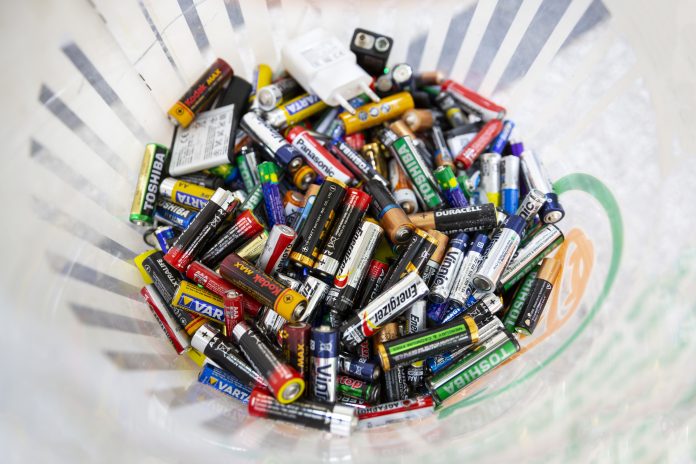Carlos Trias Pintó explains the European Economic and Social Committee’s stance on industrial policy, including strategies to secure access to raw materials for batteries
This article provides a tour of the EESC’s pronouncements on industrial policy and proposes solutions related to what are now known as circular products and their challenges, following a holistic approach.
Circular products and their challenges
The overall objective of EU action should be to further develop a well-functioning toolbox of horizontal policies and a predictable legal framework to incentivise innovation, support investments and help industry provide solutions to societal challenges, according to the EESC opinion on Investing in smart, innovative and sustainable industry.
If EU Climate and Circular Economy policies are to create jobs in Europe, the key parts of the value chain enabling those policies must be located in Europe. Therefore, it is important that the EU Strategy recognises the importance of value chains and addresses ambitious measures to develop these further. The EESC underlines that institutional governance should be enhanced, including in its impact assessment not only from the economic side, but also concerning the environmental and societal impact along the whole value chain, the EESC opinion on Strategic developments in industrial policy by 2030 explains.
Strategies to secure access to raw materials
The industrial policy must go hand-in-hand with a firm trade and foreign policy that, in turn, must develop strategies to secure access to raw materials. Indeed, adequate access to certain strategic raw materials is going to be the key to effectively implementing some of the most emblematic measures of the EU 2030 Agenda, and more specifically, a green industrial strategy as a cornerstone of the European Green Deal.
In our view, there are several key points to consider, accentuated in times of coronavirus, given the current disruptions in the different value chains, as well as future uncertainties:
- The control of strategic value chains, which will have to be Europeanised to the greatest extent possible, in order to regain industrial sovereignty that has been abdicating to China for too long. Please, note that the majority of the raw materials trade is under China’s control. Obviously, this question is relevant to the price of lithium.
- It is essential to trace the value chains in a comprehensive manner. It is well known that the extraction of raw materials often comes hand-in-hand with the violation of peoples’ fundamental rights (child labour, poor conditions on health and safety, etc.). The EESC stresses that all links in the value chain must be aligned with the Sustainable Development Goals and the Paris Agreement on Climate Change, establishing minimum cross-cutting conditions that cannot be substituted. This minimum inviolable threshold is encompassed in international conventions on the rights of vulnerable people (such as women and girls, children, refugees and migrant workers).
- Sustainability chapters in EU Free Trade Agreements (FTAs) must promote the implementation of ILO labour standards and in the view of the UN Guiding Principles on Business and Human Rights, enforced through compliance with good fiscal governance.
What role subsidies and taxation play to promote the circular economy of batteries?
The circular economy is key for developing Europe’s future economic model. The EESC believes that “products or services which adhere to the principles of circularity should be differentiated in price in a clear way” and that “reduced rates or exemption on VAT for recycled products as well as reuse and repair activities can incentivise entrepreneurs to be active in this space, and offer consumers a competitively priced product” […], as stated in the EESC opinion on industrial strategy.
There is much to be done during the coming years to achieve the necessary level of technological expertise in the EU, to secure the supply of raw materials from third countries and EU sources and to ensure that batteries can be recycled safely and cleanly. “Widespread e-mobility, with zero CO₂ emissions, is the next key step towards making sustainable transport and climate neutrality happen. Nevertheless, only by having ongoing access to raw materials for batteries will Europe be able to move away from fossil-based fuels and embrace electrification”, says the EESC report on Strategic Action Plan on Batteries.
Subsidies should shift to support the use of secondary raw materials and encourage the application of the principles of eco-design across all manufacturing sectors, the EESC opinion on Circular Economy Package explains.
There is a need to introduce taxes with both positive and negative rates. The revenues raised from CO2 taxes should be used to finance incentives for CO2-reduction techniques locally, regionally and nationally, as stated in the EESC opinion on Taxation mechanisms for reducing CO2 emissions.
What can consumers do, through their daily purchasing actions?
Calculating the social and environmental footprint of products in the various value chains is something that has huge potential for providing consumers with relevant information regarding their purchasing decisions, as part of a digital society. Education, life-long training and self-learning must be put in place and consumers provided with the most objective information possible, steering them towards circular patterns of behaviour, as the EESC opinion on Consumers in the circular economy explains.











